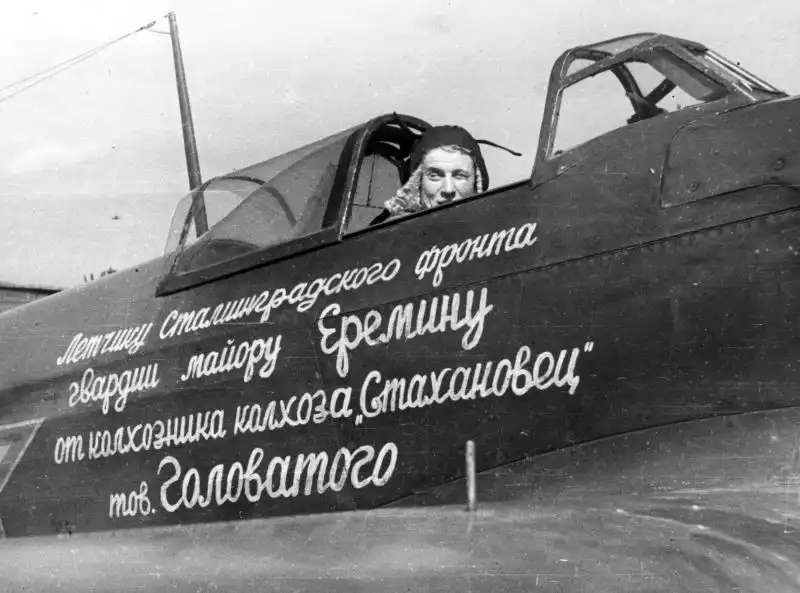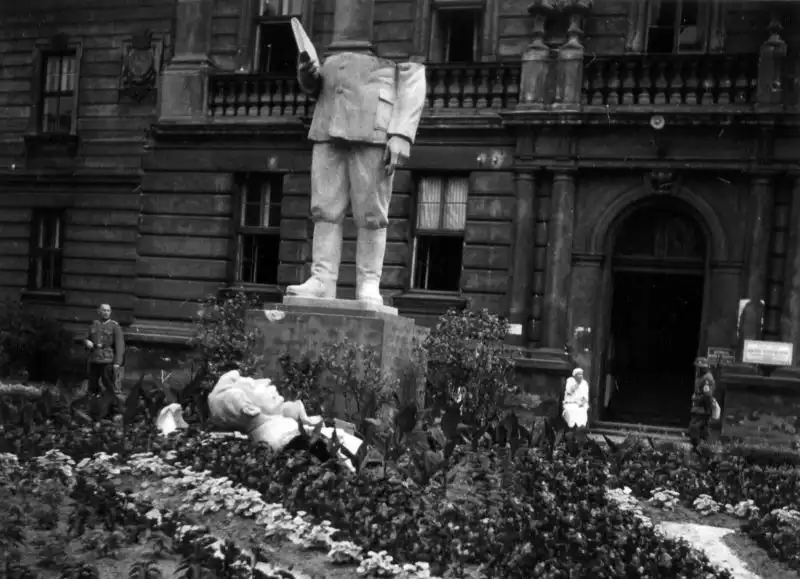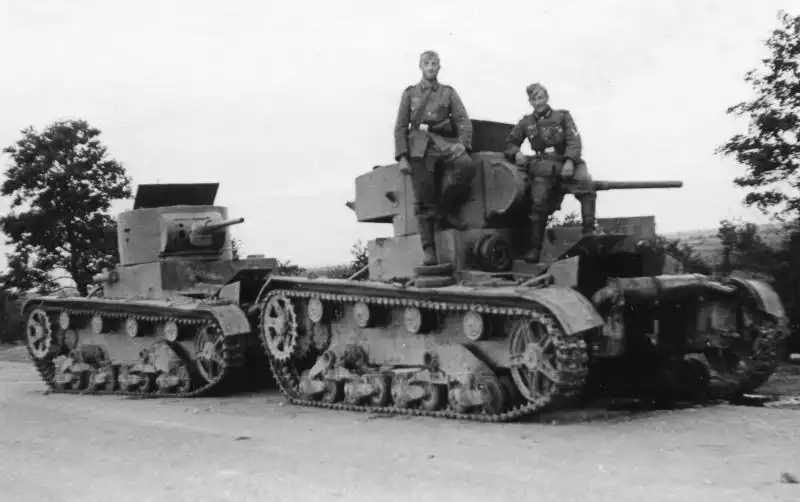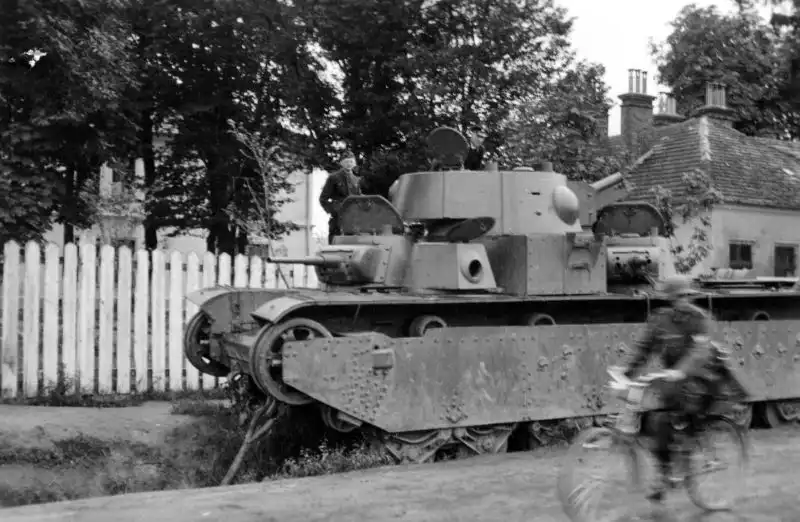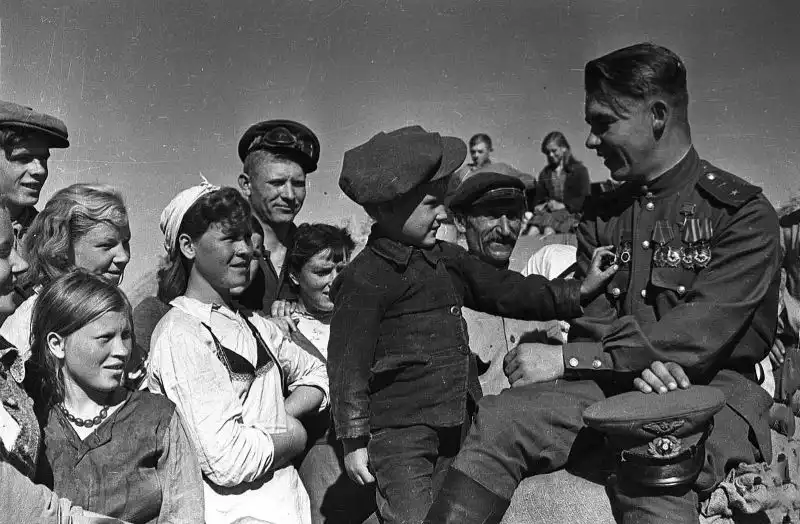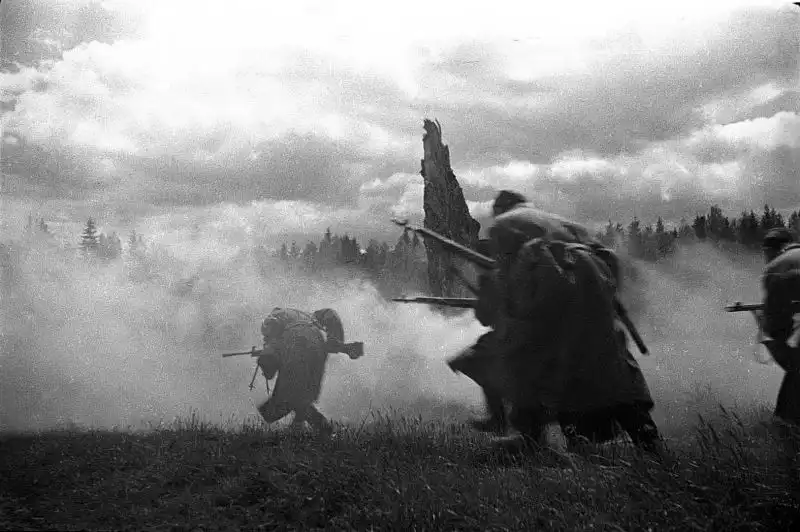Soviet 203-mm B-4 Howitzer of Guards Sergeant Ivan Samoilov, Germany 1945
August 21, 2025 - Reading time: 4 minutes
Soviet 203-mm B-4 howitzer of Guards Sergeant Ivan Samoilov in Germany, 1945 — a symbol of Soviet heavy artillery power in World War II.

This wartime photograph shows the firing position of a Soviet 203-mm B-4 heavy howitzer, commanded by Guards Sergeant Ivan Samoilov, on the 1st Ukrainian Front in Germany, 1945. The B-4 was one of the most powerful artillery systems of the Red Army, officially designated the “203-mm howitzer model 1931.”
Nicknamed the “Stalin’s Sledgehammer” by Soviet troops, the B-4 howitzer had a 100-kg high-explosive shell with a maximum firing range of up to 18 km. It was first tested in combat during the Soviet-Finnish Winter War, where it proved essential in destroying the concrete bunkers of the Mannerheim Line. During the Great Patriotic War, B-4s were widely employed to smash German strongpoints, pillboxes, and urban fortifications, particularly during the storming of cities like Königsberg, Poznań, and Berlin.
The total wartime production of the B-4 reached 871 pieces. Its massive firepower played a decisive role in breaching the heavily fortified German defensive lines. In this photograph, Guards Sergeant Samoilov’s crew is seen preparing their gun for action during the final offensive operations in Germany.
The image not only demonstrates the might of Soviet heavy artillery but also symbolizes the industrial and tactical power that brought the Red Army to victory in Europe.
Technical photo data:
📝 Source of information: Pravda newspaper, No. 37 (9808), February 12, 1945
📍 Location: Germany
📅 Date of photo: 1945
📷 Photographer: Alexander Ustinov
- Soviet 203-mm B-4 howitzer Germany 1945
- Red Army heavy artillery WWII
- B-4 Stalin’s Sledgehammer
- 1st Ukrainian Front artillery operations
- Battle of Germany Soviet artillery
- B-4 howitzer destruction of fortifications
- Soviet 203-mm gun World War II
- Red Army offensive artillery support
- B-4 howitzer Berlin offensive
- Soviet heavy guns WWII Eastern Front
Tags
Category
Search
Categories
- Unidentified WWII Photos (12)
- World War II Photos 1937 (1)
- World War II Photos 1938 (1)
- World War II Photos 1939 (3)
- World War II Photos 1940 (5)
- World War II Photos 1941 (103)
- World War II Photos 1942 (58)
- World War II Photos 1943 (51)
- World War II Photos 1944 (77)
- World War II Photos 1945 (41)
- WWII and Postwar Photos 1946 (1)
